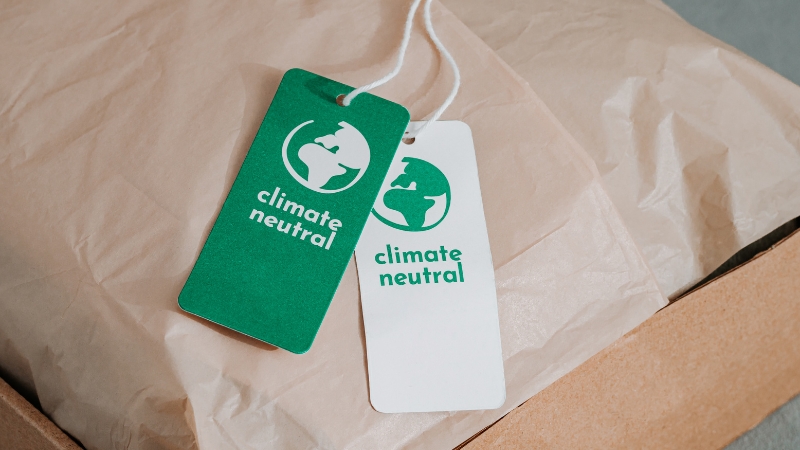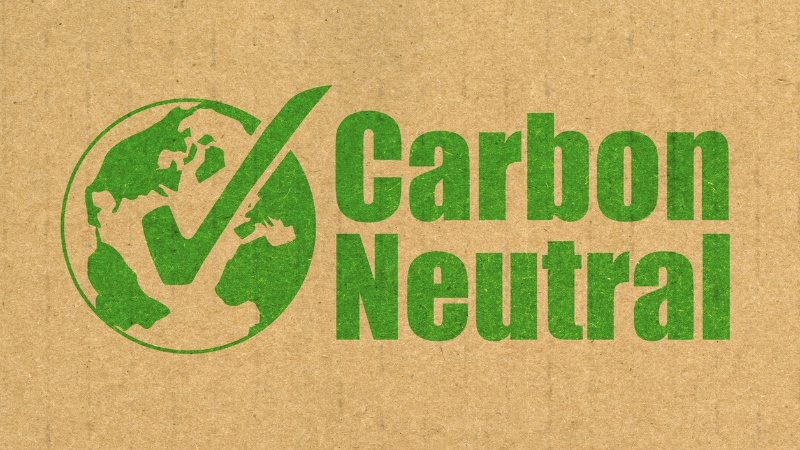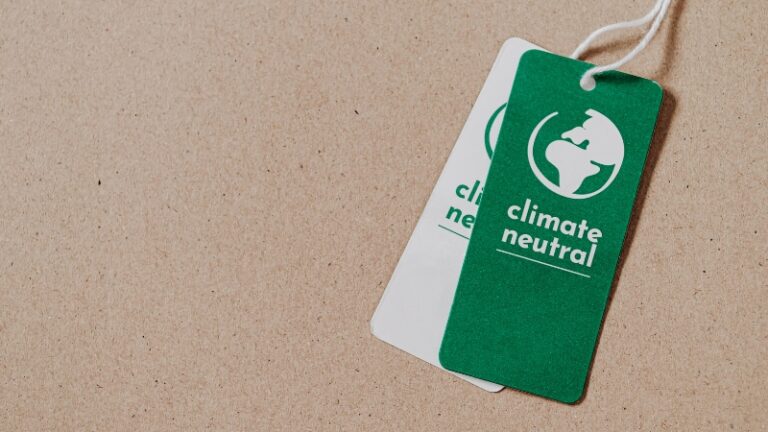Carbon neutral certification is an independent verification that a company, product, service, or event has measured all its greenhouse gas (GHG) emissions, reduced them as much as possible, and offset the remaining emissions through credible climate projects, so that the net climate impact is zero.
This certification is increasingly backed by international standards (like PAS 2060, ISO 14068), demanded by consumers, and sometimes required by governments or supply chains.
According to the International Energy Agency (IEA), the number of organisations pursuing carbon neutrality tripled between 2020 and 2023, reflecting rising regulatory and market pressure.
Key Facts & Trends
- Over 8,200 companies worldwide have announced carbon neutrality goals as of 2024.
- In 2022, the voluntary carbon market grew to $2 billion.
- 73% of global consumers say they are more likely to buy from brands with credible climate action.
- By 2030, some markets (EU, UK) will require disclosure or limits on product-level carbon footprints for certain categories.
Key Elements of Carbon Neutral Certification
Step
Description
Typical Data/Standard
1. Measure Emissions
Calculate GHG footprint (Scopes 1, 2, often 3)
PAS 2060, GHG Protocol, ISO 14064-1
2. Reduce Emissions
Implement measures to cut emissions (energy, travel, supply chain)
LED retrofits, EV fleet, green power
3. Offset Remaining GHG
Buy carbon offsets from verified projects
Verified Carbon Standard, Gold Standard
4. Third-Party Verification
Independent audit of claims and data
SCS, Carbon Trust, BSI
5. Renew Annually
Update the calculation and actions each year
Annual recertification
Measurement is the backbone. Companies use the GHG Protocol (adopted by 9 out of 10 Fortune 500 firms according to CDP, 2023), PAS 2060, or ISO 14064-1 to account for direct and indirect emissions. The inclusion of Scope 3 emissions is now standard in the UK/EU, and for large supply chains, can make up over 90% of the total footprint (CDP, 2023).
Reduction efforts can include switching to LED lighting (which can reduce lighting emissions by up to 80%, per IEA, 2022), electrifying fleets (the UK had over 1 million electric vehicles as of 2023, per ONS), or sourcing green electricity (global renewable share reached 30% in 2023, IEA).
Offsetting must be done through certified projects. Gold Standard and Verified Carbon Standard (VCS) are the most accepted, with 350M+ metric tons retired annually (Ecosystem Marketplace, 2023).
Verification by trusted third parties (like Carbon Trust, SCS, or BSI) prevents greenwashing. A 2022 EU study found 42% of climate claims were misleading without such verification.
Annual Recertification ensures a continual process; emissions, reductions, and offsets are never a “one and done” but must be monitored, improved, and validated each year.
How Is Carbon Neutrality Calculated? (Scope and Detail)
Carbon-neutral certification generally covers:
- Scope 1: Direct emissions (fuel combustion, company vehicles, on-site processes)
- Scope 2: Indirect emissions (purchased electricity, heating/cooling)
- Scope 3: Upstream and downstream emissions (supply chain, product use, travel, waste)
According to CDP (formerly Carbon Disclosure Project), Scope 3 emissions account for 70–90% of a typical consumer goods company’s carbon footprint, which means a credible carbon-neutral claim almost always includes these.
Leading Carbon Neutral Certification Standards
Standard
Founded
Global Reach
Covers Scopes
Independent Verification
Used By
PAS 2060
2010
Yes
1, 2, 3
Yes
Microsoft, M&S, Siemens
CarbonNeutral®
2002
Yes
1, 2, 3
Yes
Logitech, Bain & Company
Carbon Trust Standard
2008
Yes
1, 2, 3
Yes
Sainsbury’s, BT, Tesco
ISO 14068 (new)
2023
Yes
1, 2, 3
Yes
Many corporates
Climate Neutral
2019
US, global
1, 2, 3
Yes
Allbirds, REI, Avocado Mattress
PAS 2060 (developed by BSI) has become a de facto international benchmark, especially in the UK and EU, for rigorous GHG accounting and offsetting requirements. As of 2023, over 3,000 organizations have been certified under PAS 2060.
CarbonNeutral® was among the earliest, trusted by global brands for product- and company-level claims. Their methodology includes both reduction and offsetting, with public disclosure required.
Carbon Trust Standard is widely used in the UK, particularly in the retail, energy, and finance sectors. Tesco and Sainsbury’s, both major UK retailers, have used Carbon Trust for site- and product-level claims, driving market leadership in climate transparency.
ISO 14068 is new (2023) and designed to align with international best practices, offering global harmonisation. Adoption is growing rapidly, especially among multinationals.
Climate Neutral is popular among US and e-commerce brands, focusing on transparency and simplicity for consumer-facing claims.
Real-World Example: Carbon Neutral Certification in Action

Case Study: Logitech (Electronics)
- In 2020, Logitech became the first consumer electronics company to achieve carbon-neutral certification for its gaming products.
- The company measured emissions for the entire lifecycle: manufacturing, logistics, usage, and end-of-life.
- Logitech switched to 92% renewable energy in manufacturing and increased use of recycled materials by 34% year-over-year (Logitech Sustainability Report, 2023).
- Remaining emissions were offset through Gold Standard wind and reforestation projects in China and Africa.
- Audited by Natural Capital Partners, certification is renewed yearly.
Types of Carbon Offsets Commonly Used
Offset Type
Example Projects
Typical Cost per Ton CO₂ (2024)
Verified By
Renewable Energy
Wind, solar, and hydro in Asia/Africa
$3–7
Gold Standard, VCS
Forestry/Reforestation
Amazon tree planting, REDD+
$7–12
VCS, Gold Standard
Methane Capture
Landfill gas, dairy digesters
$5–8
VCS
Clean Cookstoves
Efficient stoves in Africa/Asia
$7–11
Gold Standard
Blue Carbon
Mangrove/wetland restoration
$8–18
VCS, Verra
This table breaks down the main types of carbon offset projects, their market pricing, and the standards behind them.
- Renewable Energy Projects (solar, wind) are the most common and typically cheapest, accounting for 35% of all voluntary market credits in 2023 (Ecosystem Marketplace). Their low cost reflects the maturity and scale of these projects, though additionality (would it have happened anyway?) is an ongoing debate.
- Forestry/Reforestation projects, especially REDD+ (Reducing Emissions from Deforestation and Forest Degradation), are popular for corporate “nature positive” claims. As of 2022, 190 million tons of CO₂ were offset via forest projects (World Bank, 2023). Costs are higher due to verification and permanence requirements.
- Methane Capture is valued for high climate impact—methane is over 25x more potent than CO₂ by GWP (IPCC AR6). Projects such as landfill gas capture or biogas from agriculture are fast-growing.
- Clean Cookstoves lower emissions in developing regions, with social and health co-benefits. These are often favoured for co-impact credits (Gold Standard 2023).
- Blue Carbon (mangrove, wetland) offsets are newer and more expensive, but rising rapidly—by 2030, they could make up 10% of all nature-based credits (IETA, 2024).
Price ranges reflect quality, region, and market demand. In 2023, the global voluntary carbon market reached $2 billion, with over 500 million tons of CO₂ traded (Ecosystem Marketplace).
How Are Claims Verified? – Third-Party Assurance
View this post on Instagram
Independent verification is required for credible certification. This typically includes:
- Data audit: Reviewing all emission calculations, reduction projects, and offset purchases
- Site visits (for larger emitters)
- Validation of offsets (ensuring offsets are not double-counted, are additional, and have a real impact)
Reputable auditors include:
- Carbon Trust
- British Standards Institution (BSI)
- SCS Global Services
- TÜV SÜD
- Natural Capital Partners
Benefits of Carbon Neutral Certification – By the Numbers
- 73% of global consumers prefer buying from climate-conscious brands
- Companies with climate certifications saw a 4–8% higher stock price resilience during the 2020 COVID crash
- Supply chain emissions account for up to 5.5x direct operations
- Over $6 trillion in global assets are now managed under climate or net-zero mandates
Risks and Criticism
Not all carbon-neutral claims are equal:
- Offsetting alone does not address systemic emissions—true best practice is “reduce first, offset last.”
- Some offset projects (especially older forestry credits) have been criticised for weak verification or overestimated climate impact (see Bloomberg, 2022; “The Carbon Offset Problem”).
“Greenwashing” Risks: A 2023 European Commission review found 42% of ‘green’ claims by companies to be exaggerated, false, or misleading—so only third-party, transparent certifications are credible.
How to Identify Credible Carbon Neutral Certifications

Checklist Item
What to Look For
Full Scope
Includes Scopes 1, 2, and major Scope 3 emissions
Third-Party Verified
Audit by recognized verifier (e.g., Carbon Trust)
Offset Quality
Projects are Gold Standard, VCS, or similar
Transparent Reporting
Emissions and offset data are published online
Annual Recertification
Data is updated and re-audited each year
- Full Scope: As of 2023, 88% of climate-leading firms now include some Scope 3 emissions in reporting (CDP, 2023). For consumer goods and retail, Scope 3 is often over 80% of the total.
- Third-Party Verification: A key differentiator—an EU review found misleading claims dropped by 70% when third-party audits were present (European Commission, 2023).
- Offset Quality: Not all offsets are equal; credits from Gold Standard or VCS are globally recognised. In 2022, 62% of offsets in the voluntary market met these highest standards (Ecosystem Marketplace).
- Transparency: Public disclosure is essential for consumer and regulator trust. According to Deloitte (2023), transparency boosts brand trust by 43% on average.
- Annual Recertification: Market best practice. Static or “once-and-done” offsets are no longer accepted for serious climate action.
Global Regulation & Future Trends

- EU Green Claims Directive (2023): New laws require proof and a third-party audit of any climate-neutral claims in the EU by 2026.
- UK Net Zero Standard: Public companies must disclose climate risk and transition plans.
- Asia-Pacific: Singapore, Japan, and Australia are introducing guidelines on carbon claims in 2024–2025.
Conclusion
@agency.works Forget your blue tick, we’ve got a green one!! ✅ We’re OFFICIALLY a certified Carbon Neutral Business! That’s because we take business seriously, and our social and environmental responsibility, too. Sooo, yeah, go us 😏😏🌳 #agencylife #carbonneutral #bcorp #environment #Sustainability #climatechange #officelife #values ♬ original sound – agetape
Carbon-neutral certification is the gold standard for credible climate action in today’s economy.
Backed by international protocols, market growth, and consumer demand, it proves a company or product has truly “zeroed out” its carbon impact by measuring, reducing, and then offsetting all emissions, with third-party oversight.
The best certifications follow full-scope accounting, use high-quality offsets, and are transparent and renewed annually.
As greenwashing risks rise, only independently certified and audited programs will be trusted by markets, regulators, and customers.

